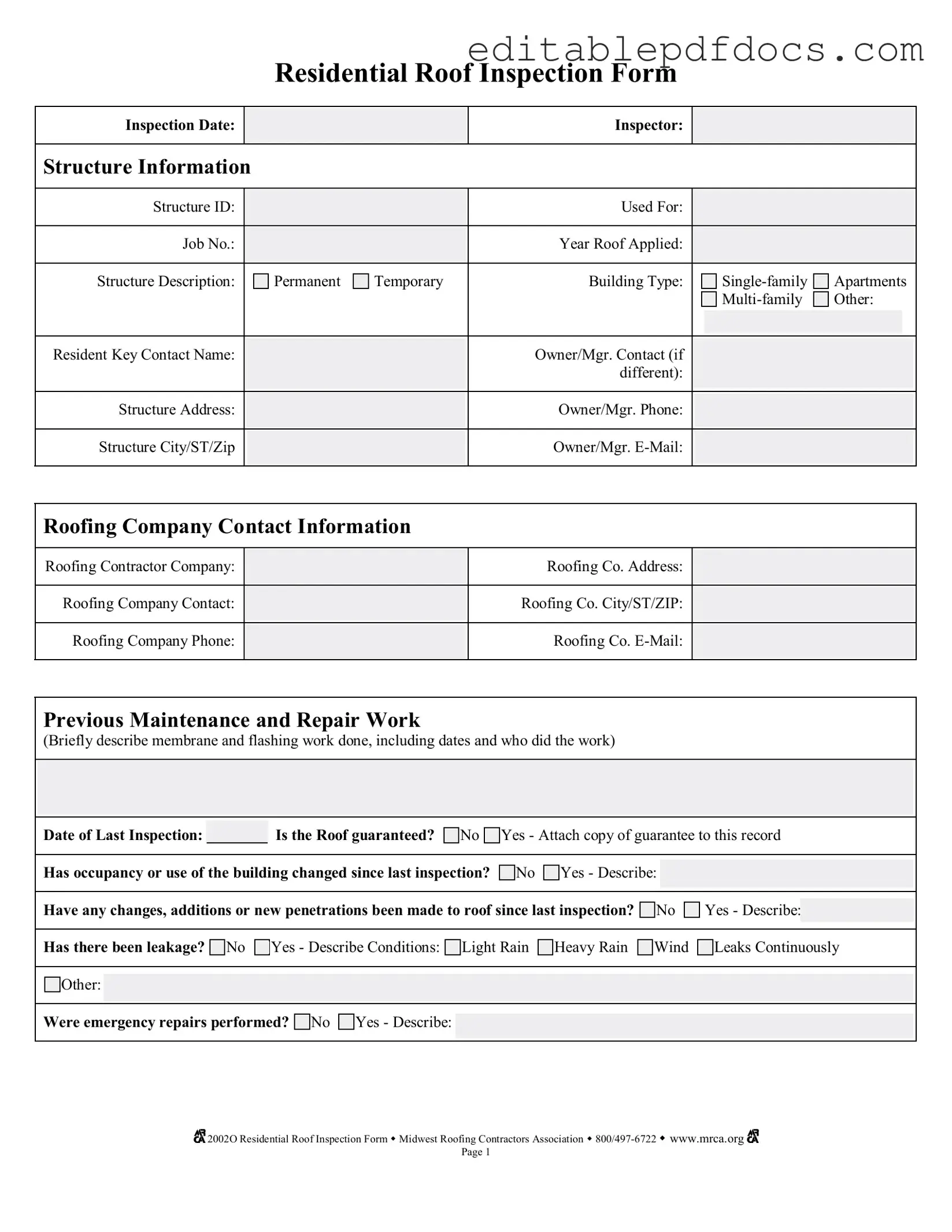Completing a Roof Inspection form can seem straightforward, but many people make common mistakes that can lead to incomplete or inaccurate information. One frequent error is failing to provide a clear inspection date. This date is crucial for tracking the roof's condition over time and for scheduling future inspections. Without it, the entire record may lack context.
Another mistake involves skipping the structure information section. This includes details like the structure ID, building type, and address. Omitting this information can create confusion about which property is being inspected, especially if multiple inspections are conducted in a short period.
People often overlook the importance of detailing previous maintenance and repair work. This section should include specifics about any membrane and flashing work completed, along with dates and contractors' names. Neglecting to include this history can hinder understanding of the roof's current condition and any underlying issues.
Additionally, individuals sometimes fail to indicate whether the roof is guaranteed. If there is a guarantee, it is essential to attach a copy. This documentation can be vital for future repairs or claims. Not noting this can lead to misunderstandings regarding the roof's coverage.
Another common oversight is not addressing changes in the building's occupancy or use since the last inspection. This information is important because different uses can impact the roof's wear and tear. A simple "yes" or "no" in this section is not enough; a brief description is often necessary.
People frequently forget to describe any leakage conditions observed during the inspection. This section should specify the type of rain, if any, during which leaks occurred, as well as the severity. Without this detail, it may be challenging to assess the urgency of repairs needed.
Another mistake is failing to document any emergency repairs performed. This information is critical for understanding the roof's current state. If emergency repairs were made, a description should accompany this section to provide context for the inspector.
Lastly, individuals sometimes neglect to mark all items with the appropriate codes on the roof plan grid. This is essential for a comprehensive assessment. By marking each issue clearly, the inspector can prioritize actions and ensure that nothing is overlooked in the inspection process.
